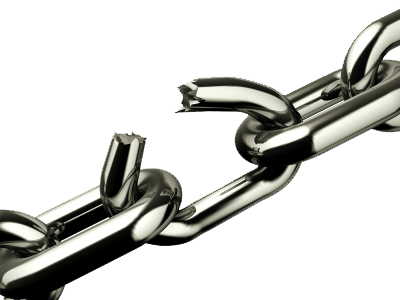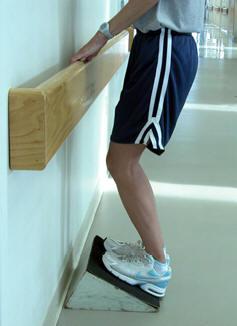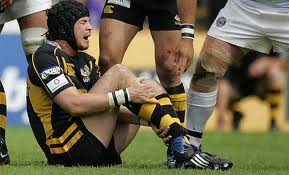So, in the last post I discussed why it's important to move properly and how you can't really expect to train at full bore unless you do. Without functional, basic human movement patterns as your foundation, you will be running and training on dysfunctional movement patterns. That doesn't sound good, but what does that mean exactly? Without getting all anatomical on you, it simply means that if you can't move the way you were designed to move, your risk of injury goes up. Over the years, especially if you've been inactive or sustained previous injury, your body has figured out some preferred ways to move without pain.
You never realized it at the time, but that ankle sprain that took forever to heal? It caused your gait to change slightly to avoid the pain. Meanwhile, your ankle became stiff (who does those PT exercises, anyway? You should've!) and, to compensate for the lack of mobility, your knee began to to de-stabilize. Would you like a wobbly knee to go with those 10,000 strides, sir?
Or how about those 'supportive', heavily cushioned shoes that we were all told to wear? Your feet were coddled and protected from our modern day concrete environment. How nice. But perhaps the protection was too much and it never allowed your foot to develop enough strength and stability. Weak, unstable feet? Gee, let's go for a 10 miler today!
 So here's what we do. We assess your fundamental movement ability. We score your movement on a scale of 0-3. We find the weak link. Then we must fix it.
So here's what we do. We assess your fundamental movement ability. We score your movement on a scale of 0-3. We find the weak link. Then we must fix it.
Where to start? Always with mobility. Do the joints or structures that are supposed to be mobile have enough mobility? If not, then we have to earn some.
When I meet a runner who has a history of injury, the two most common joints which lack mobility are the ankle and hip. Common problems include shin splints, achilles' problems, plantar fascia issues and a lack of power in the stride. I'll tell ya, being slow and hurt sucks!
Ok, finally some good news. By practicing the ankle mobility drill discussed in the news story every day, 3+ times per day, you can begin to improve your ankle mobility. Personally, I'll do the drill in the morning after I've been up for an hour, right before my run and later that evening. Think of it as “teaching” your ankle that it can, in fact, move through a greater range.
The other aspect I'd address is your calf flexibility. After running (think of all of those strides as repetitions) your calves are going to hold onto some tension and you will need to reduce that tension.
 I recommend standing on a 2 inch block, thick book or slant board for 3-5 minutes after your run. Keep your heels on the floor and knees slightly bent. Make sure the stretch is gentle – perhaps a 4-5 out of 10 on the discomfort scale. It is important for the heel to be in contact with the floor so that your calf can relax, rather than hanging off the edge of a step.
I recommend standing on a 2 inch block, thick book or slant board for 3-5 minutes after your run. Keep your heels on the floor and knees slightly bent. Make sure the stretch is gentle – perhaps a 4-5 out of 10 on the discomfort scale. It is important for the heel to be in contact with the floor so that your calf can relax, rather than hanging off the edge of a step.
Once you've improved your mobility to an acceptable level, then, if you have issues like weak feet or wobbly knees, we can begin work on stability in those areas. Becoming stable on top of a lack of mobility is a mistake – as you can imagine. You'd basically, “lock-in” your lack of mobility.
So even if you've been locked up in solitary ankle confinement for years, there's hope. Promise!
This was a pretty heavy post and I'm sorry If I lost you somewhere along the way! Next time, we'll discuss what you need to be concerned with RIGHT NOW if you're running Broad Street on May 1. In the meantime, go run!

